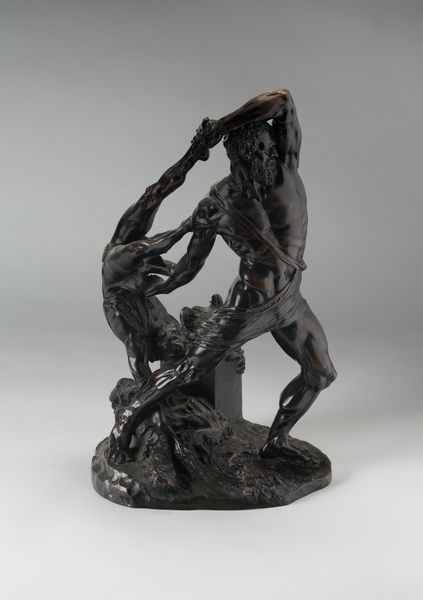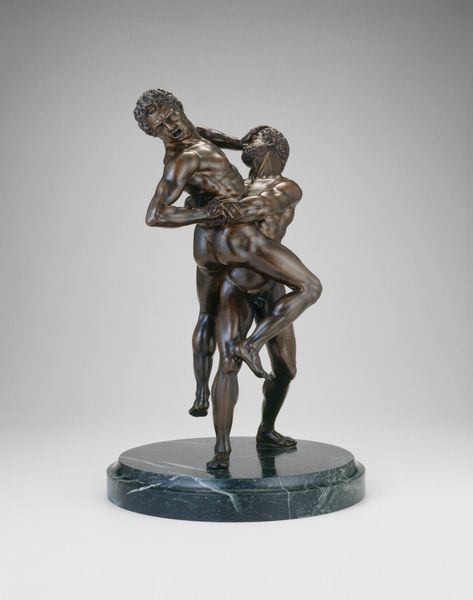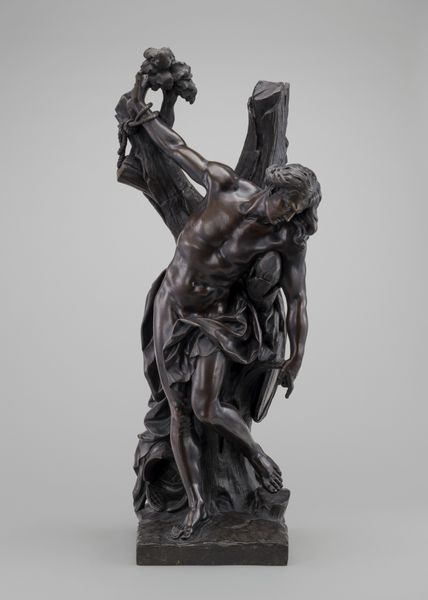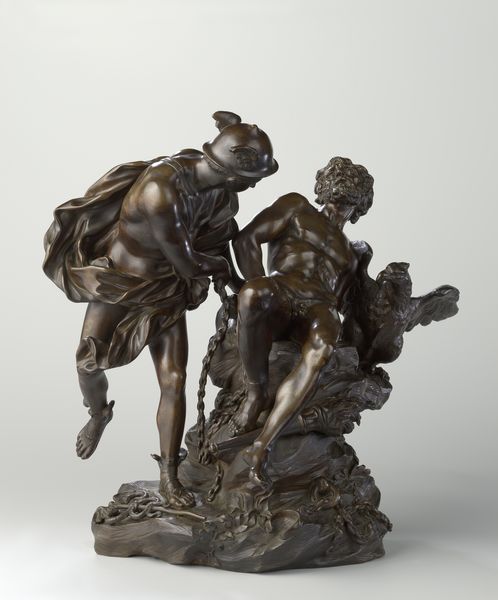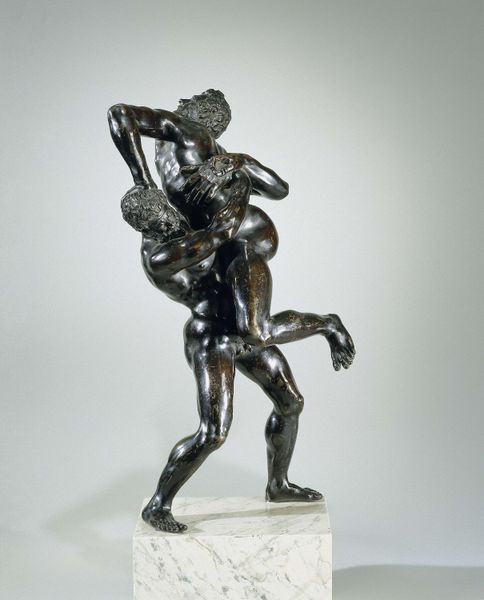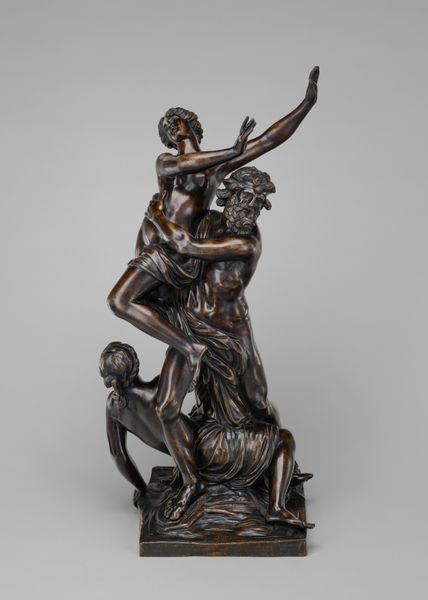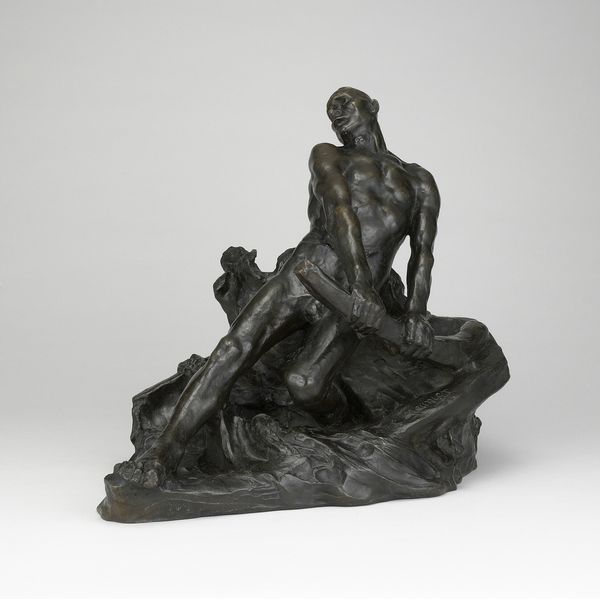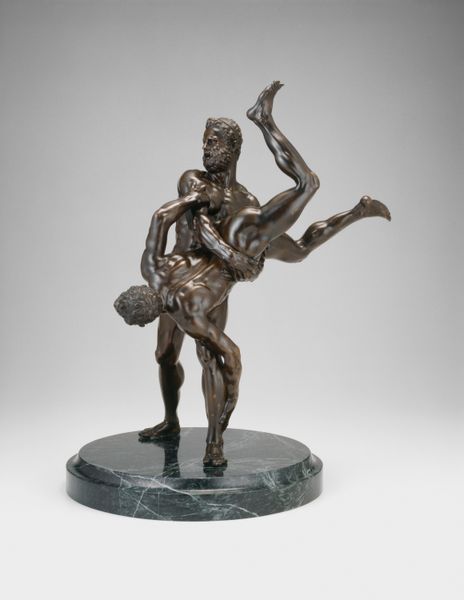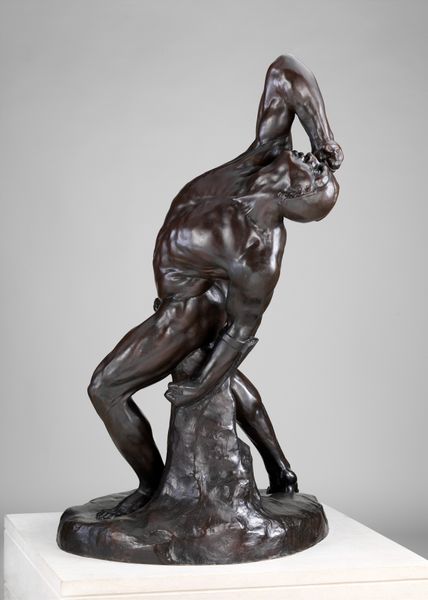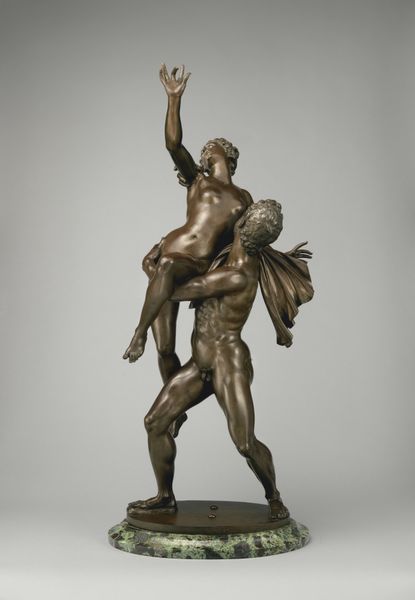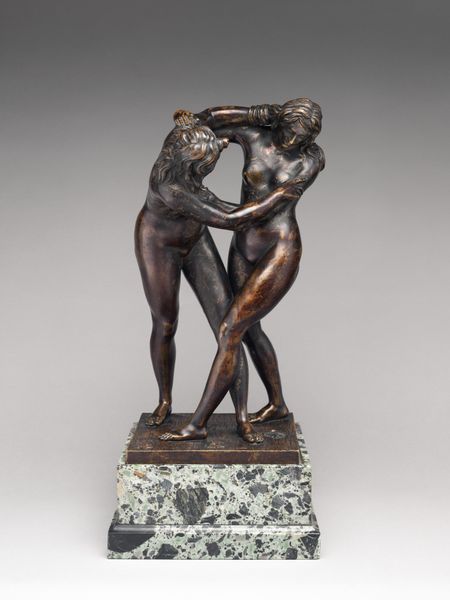
Milo of Croton marble original 1670-1682, bronze reduction late 17th/early 18th century
0:00
0:00
bronze, sculpture
#
baroque
#
sculpture
#
bronze
#
figuration
#
sculpture
#
history-painting
Dimensions: overall: 61.6 x 47 x 38.1 cm (24 1/4 x 18 1/2 x 15 in.)
Copyright: National Gallery of Art: CC0 1.0
Editor: This bronze sculpture is a late 17th or early 18th-century reduction of Pierre Puget’s marble "Milo of Croton" from between 1670 and 1682. The agonized expression and contorted pose certainly grab your attention. What aspects of this piece do you find particularly interesting, especially considering its historical context? Curator: Puget’s "Milo of Croton" compels us to consider the complex relationship between artistic patronage, political messaging, and public morality. The work, commissioned during the reign of Louis XIV, clearly aligns with royal tastes celebrating strength, stoicism, and the tragic fate of prideful hubris. Think about where it might have been displayed. Editor: Versailles, perhaps? As a moral lesson for the court? Curator: Exactly! It certainly reflects the court’s cultural aspirations, which sought to align itself with classical ideals, but it also delivers a strong cautionary message. Puget’s depiction also cleverly tapped into popular anxieties about uncontrolled power and the inevitable decline of empires. It isn't simply an exercise in artistic virtuosity but a deliberate statement intended for an audience. Editor: So, it was less about celebrating the athletic prowess of Milo, and more about the perils of overconfidence? Curator: Precisely. Milo, trapped and vulnerable, embodies the dangers of excessive pride. Considering how powerful imagery was used in the public sphere, how do you imagine such themes resonated during the era of Louis XIV, known for his absolute rule? Editor: I hadn't thought about it like that. The sculpture really seems to be about more than just the suffering of one man, but a comment on the anxieties of the time. Curator: Indeed. Puget successfully crafted a piece that engages the viewer on multiple levels. From admiration of physical form and classical ideals to apprehension about human failings and power. A complex work indeed, shaped by both artist and patron and its socio-political surroundings.
Comments
No comments
Be the first to comment and join the conversation on the ultimate creative platform.
